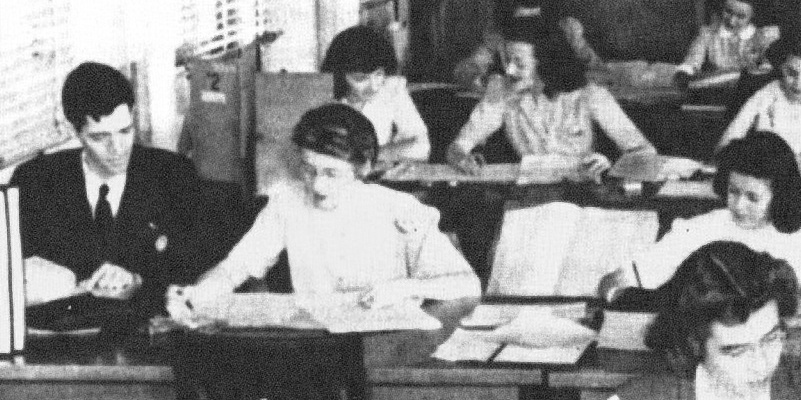When an author begins a new novel, the blank computer screen presents a terrifying challenge and a few inevitable questions rise to the surface: How will zero words become one hundred thousand? How can one possibly create a riveting story out of thin air that will surprise and delight readers—even when writing about spies, murder, mayhem and more. Maybe especially when writing about spies, murder, mayhem, and more.
When I started what eventually became The Berlin Letters, I knew two things from the get-go—I wanted to use the rise and fall of the Berlin Wall as not only bookends framing the story, but as a character within it. In the split-time narrative I envisioned, readers would follow Haris Voekler’s life from 1961 to 1989 behind the Wall, while rooting for his daughter Luisa, in Wall’s final days in 1989 as she races to free her father from a Stasi prison.
But how to connect these stories into one cohesive and compelling narrative? After all, very little communication passed from East Berlin to West Berlin after that early morning of August 13, 1961. Upon waking that day, Berliners discovered that head of state Walter Ulbricht had coiled barbed wire straight down the center of their city and cut train lines and phone lines. The Soviet Sector, commonly known as East Berlin, was instantly cut off from the English, French, and American sectors, referred to as West Berlin. Even a family could not cross that barrier to be together once more.
That’s when I discovered the CIA’s top-secret counterintelligence operation, the Venona Project. I found my connection points and a way to pass information across the Wall within letters, and I found some amazing women…
Upon entering World War II in 1941, US military intelligence began intercepting all international messages and communications, regardless of whether the messages originated with friend or foe. While decryption operations centered upon Axis communications, Allied messages stacked up in a corner—specifically Soviet messages stacked up in a corner. Even as early as 1943, Col. Carter Clarke wasn’t sure he trusted the US’s new ally, Joseph Stalin, and he decided to find out what Stalin was really thinking—so he hired Virginia school teacher Gene Grabeel to peek into Stalin’s letters.
Thus began the Venona Project. Grabeel was soon joined by a number of other women: Josephine Miller, Carrie Berry, Mary Boeke, Helen Bradley, Gloria Forbes, Doris Johnson, Ruby Roland, Juanita McCutheon, Rosa Brown, and Angelia Nanni are among the few who made up the team in Venona’s early days. Each woman was dedicated, bright, and extraordinary at math. That last detail was vital, as breaking Soviet codes took a lot of complex math.
Considered “unbreakable,” Soviet codes were based upon a multi-layered security system. To begin with, the Soviets employed a “one-time pad” system. This meant that each code was calibrated only one time using a unique series of numbers recorded on a page that only the sender and the recipient possessed. And, throughout Venona’s work, no key pages were obtained nor codebooks captured.
The women started with math and soon discovered that, beyond the “one-time pad,” each final code went through several steps of non-carrying addition to formulate and an equal number of steps of non-carrying subtraction to decipher. Only then could the original words be discovered. The process was tedious and tremendously slow, and, without any duplicates, it also meant that the Venona codebreakers couldn’t achieve any “depth”—they couldn’t compare one message to another, find links, and use those links to make calculated assumptions.
Then they got a huge break. In the later days of the Battle of Stalingrad, Stalin moved much of his industry from Moscow deeper into Siberia to protect it from capture. In the mayhem, duplicate pads were accidentally created. Yet in the rush of war, with manufacturing slow and demand high, the Soviets gambled that spreading those few sets of duplicates across lanes of communication traffic would protect their code. It did not.
One day a member of the Venona team recognized a numerical code within the “diplomatic” lane and remembered she’d seen the same five numbers with the “commerce” lane days before. Using this “depth of two”, the race was on. Grabeel and her team started cracking the Soviet codes with greater speed and, over the project’s active thirty-seven year run, broke thousands of them. In doing so, they discovered such famous spies as Kim Philby and Don Mclean, which helped bring down the whole Cambridge Five spy-ring, uncovered Soviet infiltration of the Manhattan Project, revealed the duplicity of German-born scientist-turned-spy Klaus Fuch, along with betrayals of Alger Hiss, Alan May, and Julius and Ethel Rosenberg, among others.
But no one could know. In order to be effective, Venona needed to remain secret—even the sitting presidents over those thirty-seven years did not know of Venona’s existence. That meant none of their discoveries could be used in court, as that would compromise the secrecy surrounding the Project. Thus began Venona’s close working relationship with the FBI. The Venona women would find a name, the FBI would follow the lead and discover new information and pass it back to the Venona team, which would then use the leads to delve into the same communiques again. Armed with the new information—possibly dates, code names, and locations—the team uncovered even more material within messages already canvassed, creating a fuller picture for the FBI and subsequent prosecutions. The Venona team returned to the same communiqués again and again, continually uncovering new and valuable intelligence across those thirty seven years.
In 1978, the NSA determined nothing more of vital interest could be gleaned from their stash of old World War II messages. The Venona team was given two years to wind down its work and pack up its materials. Even then, no one talked. It wasn’t until 1995 that the Venona material was declassified and many of their successes became known. At the time, the name primarily associated with the Project was Meredith Gardner, Venona’s male linguist. The original female team of Grabeel, Miller, Berry, Boeke, Bradley, Forbes, Johnson, Roland, McCutheon, Brown Nanni and more, were rarely mentioned if at all. But, rather than consider themselves heroes and talk about their work, these extraordinary women kept their secrets. Many of their personal stories and extraordinary lives only became known as reporters and writers sought them out during their final days. Even then most were reluctant to talk.
The story of the Venona Project and the fascinating women behind it astounded me. From small towns and unassuming backgrounds, heroes were born of ingenuity, hard work, and a lot of math—there was always the math. But I disagreed with the 1978 NSA decision to disband the project—I imagined that, just like Carter back in 1943, there was still value in digging deeper into Stalin’s mail—still truths to unearth, still spies to discover.
So, within The Berlin Letters, I created Venona II and placed them in a top-secret office in Arlington, VA — maybe even blocks from the original team’s secret offices. There readers will discover intelligent and creative women continuing to glean new information from those same codes dating back to WWII and the early days of the Cold War. That is until one of them, Luisa Voekler, discovers a cache of communiquès that tie right back to her own family and the adventure begins…
***


















